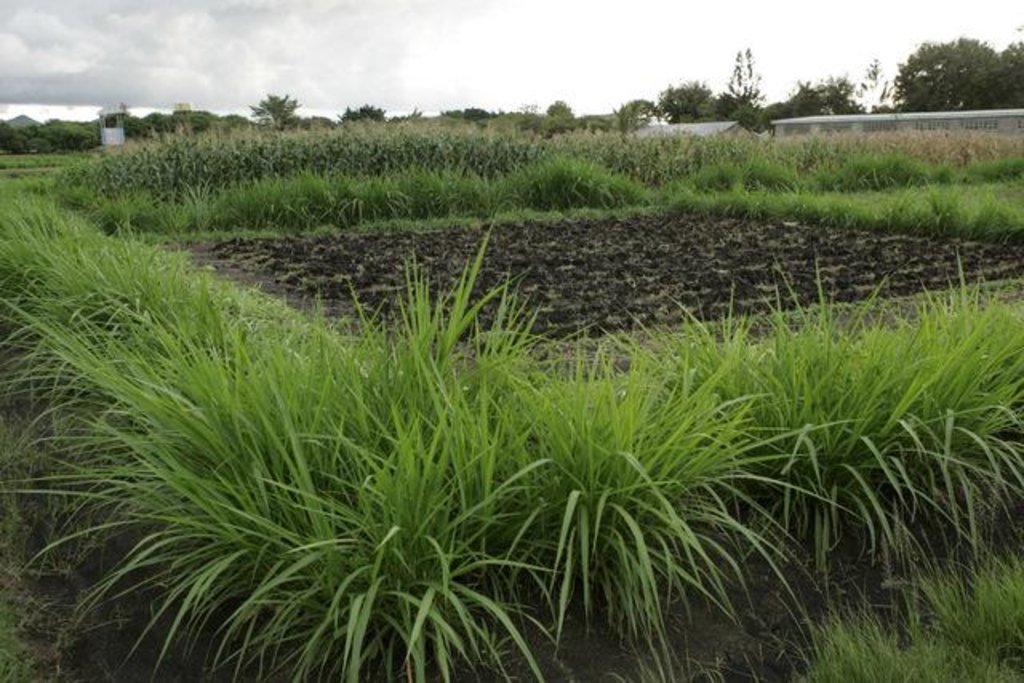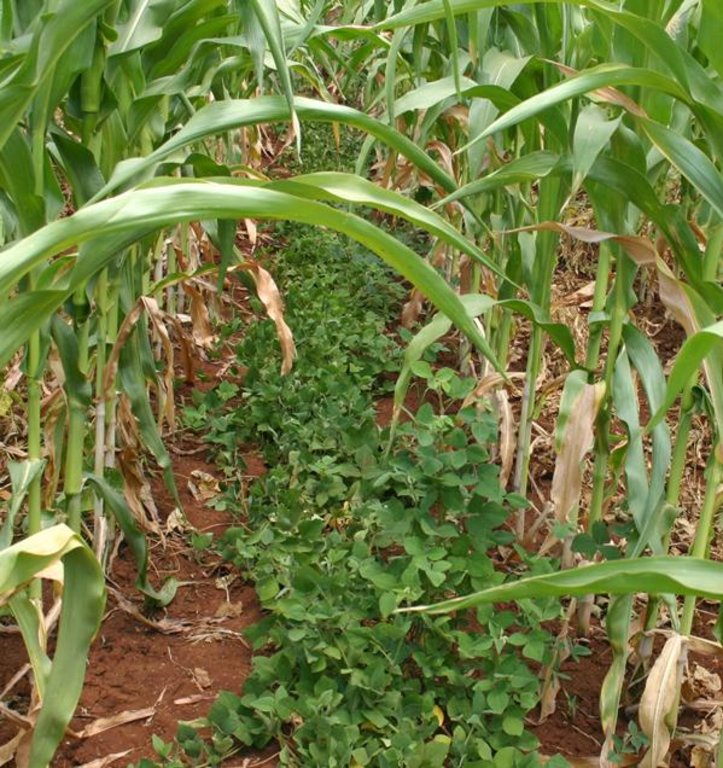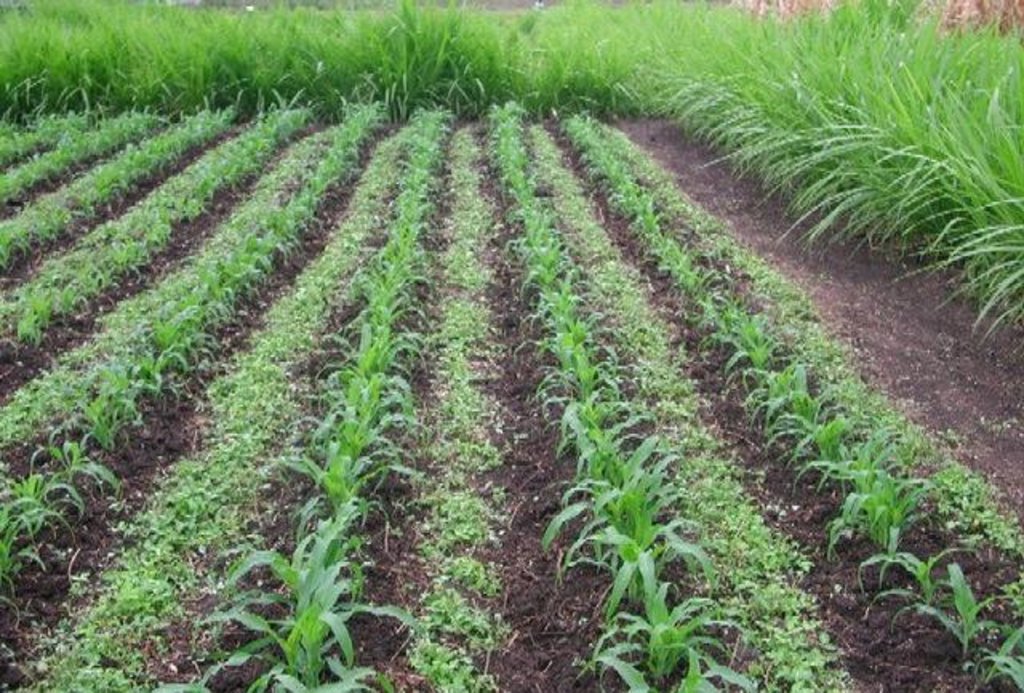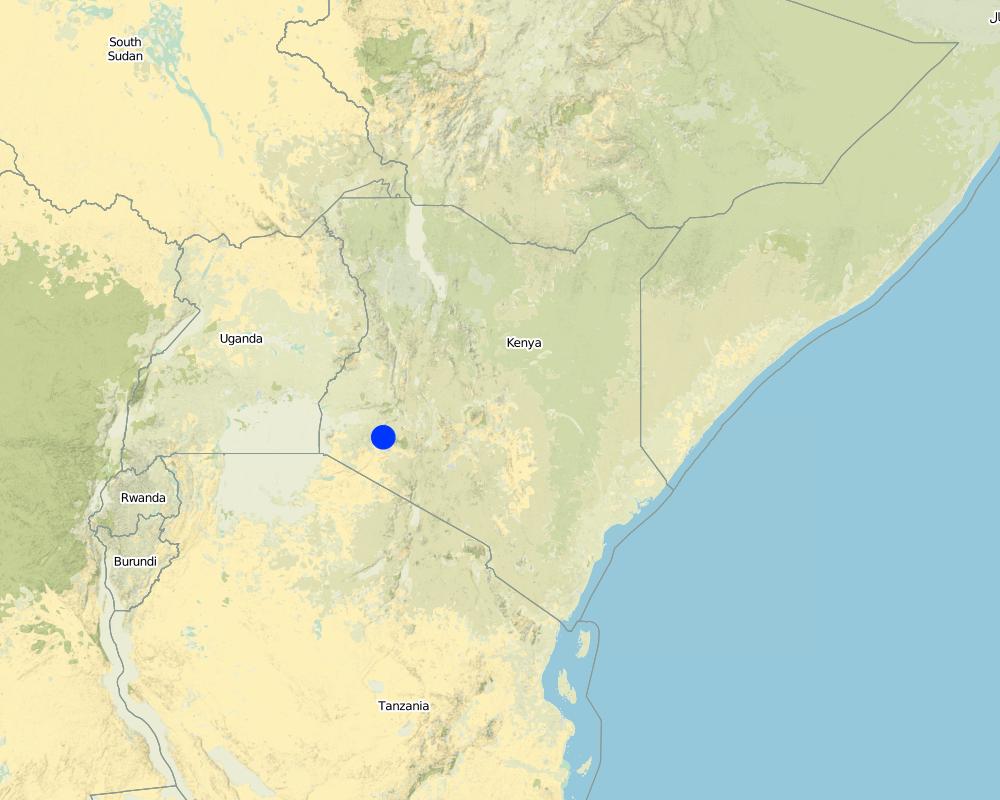Push-Pull Integrated Pest and Soil Fertility Management [Кения]
- Создание:
- Обновить:
- Составитель: Julie Zähringer
- Редактор: –
- Рецензент: Alexandra Gavilano
technologies_958 - Кения
- Полная аннотация в формате PDF
- Полная аннотация в формате PDF для вывода на печать
- Полная аннотация в формате интернет-страницы
- Полная аннотация (неотформатированно)
- Push-Pull Integrated Pest and Soil Fertility Management: 22 декабря 2016 г. (inactive)
- Push-Pull Integrated Pest and Soil Fertility Management: 28 марта 2017 г. (inactive)
- Push-Pull Integrated Pest and Soil Fertility Management: 12 мая 2017 г. (inactive)
- Push-Pull Integrated Pest and Soil Fertility Management: 25 апреля 2019 г. (public)
Просмотреть разделы
Развернуть все Свернуть все1. Общая информация
1.3 Условия, регламентирующие использование данных, собранных ВОКАТ
Составитель и ответственный(-ые) специалист(-ы) согласны с условиями, регламентирующими использование собранных ВОКАТ данных:
Да
2. Описание Технологии УЗП
2.1 Краткое описание Технологии
Определение Технологии:
“Push-Pull” is a technology to efficiently control pests and progressively improves soil fertility.
2.2 Подробное описание Технологии
Описание:
In the Lake Victoria region - like in many other parts of sub-Saharan Africa – stemborer pests, striga weeds and poor soil fertility are the main constraints to efficient production of cereals. In combination they often lead to complete crop failure. The “Push-Pull” technology efficiently controls the pests and progressively improves soil fertility. It involves intercropping maize with a repellent plant, such as desmodium (“push”); an attractant trap plant, such as napier grass (Pennisetum purpureum) is planted as a border crop around this intercrop (“pull”). The stemborer moths are attracted to volatile compounds emitted by the napier grass which at the same time serves as a haven for the borers' natural enemies. When moths lay eggs on napier grass a sticky substance secreted by the grass physically traps the moths’ larvae. Napier is also an important carbohydrate-rich fodder grass. Desmodium, a perennial cover crop, produces repellent volatile chemicals that push away the moths, and the plant effectively suppresses striga weeds through its root exudates. Furthermore, desmodium fixes nitrogen, conserves soil moisture, enhances arthropod abundance and diversity and improves soil organic matter, thereby making cereal cropping systems more resilient and adaptable to climate change. Being a low-growing plant it does not interfere with the crops' growth. Push-pull simultaneously improves cereal productivity; enables production of year-round quality fodder - thereby allowing for integration with livestock husbandry; diversifies income streams and enables smallholders to enter into the cash economy. It also improves soil fertility; protects fragile soils from erosion and enables a minimum tillage system. The technology is appropriate to resource-poor smallholder farmers as it is based on locally available plants, affordable external inputs, and fits well with traditional mixed cropping systems practiced in SSA.
2.3 Фотографии, иллюстрирующие Технологию
2.5 Страна/ регион/ места, где применяется Технология, информация о которых собрана в данной Анкете
Страна:
Кения
Административная единица (Район/Область):
Lake Victoria region
Map
×2.6 Сколько лет применяется данная Технология
Если год начала применения Технологии достоверно неизвестен, дайте примерную оценку:
- 10-50 лет назад
2.7 Внедрение Технологии
Укажите, как именно Технология УЗП была внедрена:
- в качестве научного/ полевого эксперимента
3. Классификация Технологии УЗП
3.2 Текущий(-ие) тип(-ы) землепользования на территории, где применяется Технология

Пахотные угодья и плантации
- Однолетние культуры
Пояснения:
Major land use problems (land users’ perception): Cereal pests and diseases, decline of soil organic matter and fertility
3.3 Дополнительная информация о землепользовании
Обеспеченность водой участков, где реализуется Технология :
- богарные земли
3.5 Распределение Технологии по площади
Пояснения:
Total area covered by the SLM Technology is 76000 m2.
3.6 Мероприятия УЗП, выполняемые в рамках Технологии

Мероприятия с использованием растительности
- Р2: Злаковые и многолетние травянистые растения

Агрономические мероприятия
- A1: Растительный/ почвенный покров
Пояснения:
Main measures: vegetative measures
Type of agronomic measures: mixed cropping / intercropping, contour planting / strip cropping, retaining more vegetation cover
Type of vegetative measures: aligned: -along boundary, aligned: -linear
3.7 Основные проблемы деградации земель, на решение которых направлена Технология

ухудшение химических свойств почв
- Хп: Снижение плодородия и уменьшение содержания органического вещества (вызванное не эрозией, а другими причинами)

биологическая деградация
- Бм: утрата местообитаний
- Бб: рост числа вредителей/болезней
Пояснения:
Main type of degradation addressed: Cn: fertility decline and reduced organic matter content, Bh: loss of habitats, Bp: increase of pests / diseases, loss of predators
3.8 Предотвращение и снижение деградации земель, или восстановление нарушенных земель
Укажите цель Технологии по отношению к деградации земель :
- снижение деградации земель
- предотвращение деградации земель
Пояснения:
Main goals: prevention of land degradation, mitigation / reduction of land degradation
4. Технические характеристики, мероприятия по практической реализации, вложения и стоимость
4.1 Технический рисунок, иллюстрирующий Технологию
4.2 Спецификация / пояснения к техническому рисунку
Layout of push-pull plot with1 m spacing between napier border and maize field
Technical knowledge required for field staff / advisors: moderate
Technical knowledge required for land users: low
Main technical functions: increase in organic matter, increase in nutrient availability (supply, recycling,…), promotion of vegetation species and varieties (quality, eg palatable fodder), pest control
Mixed cropping / intercropping
Material/ species: Desmodium as a perennial intercrop
Remarks: Desmodium is drilled in between maize rows at 75 cm row to row distance
Contour planting / strip cropping
Material/ species: napier grass (Pennisetum purpureum)
Remarks: Spacing of napier plants should be 75 cm between rows and 50 cm between plants within a row
Aligned: -along boundary
Vegetative material: G : grass
Spacing between rows / strips / blocks (m): 75.00
Vertical interval within rows / strips / blocks (m): 50.00
Aligned: -linear
Vegetative material: C : perennial crops
Spacing between rows / strips / blocks (m): 75.00
Perennial crops species: Desmodium
Grass species: Napier grass (Pennisetum purpureum)
4.4 Мероприятия, необходимые для начала реализации
| Деятельность | Тип мероприятия | Сроки | |
|---|---|---|---|
| 1. | Plant 3 consecutive rows of napier grass (Bana variety) around the plot: make planting holes, apply fertilizer (or manure), place 3-node canes or root splits, cover with soil (before rains) | Мероприятия с использованием растительности | |
| 2. | Land preparation for desmodium: plough and harrow the land (to get fine soil), make furrows between the rows where the maize will be planted (using strong pointed stick; before rains) | Мероприятия с использованием растительности | |
| 3. | Mix desmodium seed with super phosphate fertilizer (ratio 1:2), or alternatively with fine soil. Sow into the furrows and cover with soil (onset of rains) | Мероприятия с использованием растительности | |
| 4. | Plant maize. / Weeding of maize, desmodium and Napier grass | Мероприятия с использованием растительности | 3 and 5-6 weeks after planting maize |
| 5. | Manage napier grass: 1st harvest after 3 months (plants are 1-1,5 m high), leave stem height of 10 cm for quick regrow, start with inner row | Мероприятия с использованием растительности | 1st harvest after 3 months |
4.6 Поддержание/ текущее обслуживание
| Деятельность | Тип мероприятия | Сроки/ повторяемость проведения | |
|---|---|---|---|
| 1. | Land preparation for maize: carefully dig/plough between desmodium lines not to disturb / uproot the desmodium (it is a perennial crop!) | Мероприятия с использованием растительности | |
| 2. | Plant maize | Мероприятия с использованием растительности | |
| 3. | Trim the desmodium so that it does not overgrow in between the maize plants | Мероприятия с использованием растительности | after 3 and 6 weeks |
| 4. | Repeat activities 5.-7. listed under establishment | Мероприятия с использованием растительности |
4.7 Стоимость поддержания/ текущего обслуживания ( в год)
Пояснения:
Machinery/ tools: planting stick / hoe
Size of push-pull plot for the cost calculations above = 0.25 ha.
4.8 Наиболее значимые факторы, влияющие на стоимость затрат
Опишите наиболее значимые факторы, влияющие на стоимость затрат:
Input prices (in US$):
1 Person-day = 1.2 US$.
1 napier root split / cane = 0.14 US$.;
1 kg desmodium seeds = 18.9 US$.;
1 kg superphosphate fertilizer = 0.68US$
5. Природные и социально-экономические условия
5.1 Климат
Среднегодовое количество осадков
- < 250 мм
- 251-500 мм
- 501-750 мм
- 751-1000 мм
- 1001-1500 мм
- 1501-2000 мм
- 2001-3000 мм
- 3001-4000 мм
- > 4000 мм
Агроклиматическая зона
- Умеренно-влажная
Thermal climate class: tropics
5.2 Рельеф
Склоны (преобладающие):
- пологие (0-2%)
- покатые (3-5%)
- покато-крутые (6-10%)
- крутые (11-15%)
- очень крутые (16-30%)
- чрезвычайно крутые (31-60%)
- обрывистые (>60%)
Формы рельефа:
- плато/ равнины
- гребни хребтов/холмов
- склоны гор
- склоны холмов
- подножья
- днища долин
Зона высотной поясности:
- 0-100 м над уровнем моря
- 101-500 м н.у.м.
- 501-1000 м н.у.м.
- 1001-1500 м н.у.м.
- 1501-2000 м н.у.м.
- 2001-2500 м н.у.м.
- 2501-3000 м н.у.м.
- 3001-4000 м н.у.м.
- > 4 тыс. м н.у.м.
Комментарии и дополнительные сведения по условиям рельефа/ топографии :
Slopes on average: flat (0-2%), gentle (3-5%), moderate (6-10%)
Landforms: plateau / plains, footslopes, valley floors
5.3 Почвы
Средняя мощность почв:
- поверхностные (0-20 см)
- неглубокие (21-50 см)
- умеренно глубокие (51-80 см)
- глубокие (81-120 см)
- очень глубокие (> 120 см)
Гранулометрический состав (верхнего горизонта):
- тонкодисперсный/ тяжёлый (глинистый)
- средние фракции (суглинистый, супесчаный)
Содержание органического вещества в верхнем горизонте:
- низкое (< 1%)
5.6 Характеристика землепользователей, применяющих Технологию
Рыночная ориентация производства:
- смешанное (самообеспечение/ товарное хозяйство
- натуральное хозяйство (самообеспечение)
Относительный уровень достатка:
- плохой
- очень плохой
Индивидуальное или коллективное хозяйство:
- частное/ домовладение
Уровень механизации:
- ручной труд
- тягловая сила
Укажите другие важные характеристики землепользователей:
Land users applying the Technology are mainly disadvantaged land users
Difference in the involvement of women and men: some organized in informal groups
Population density: > 500 persons/km2
5.7 Средний размер земельных участков, арендуемых или находящихся в собственности землепользователей, применяющих Технологию
- < 0,5 га
- 0,5-1 га
- 1-2 га
- 2-5 га
- 5-15 га
- 15-50 га
- 50-100 га
- 100-500 га
- 500-1000 га
- 1000-10000 га
- > 10000 га
Считается ли это мелким, средним или крупным хозяйством (по местным масштабам)?
- мелкое
5.8 Собственность на землю, права на земле- и водопользование
Пояснения:
Land ownership: state, communal / village, individual, not titled, individual, titled
6. Воздействия и заключительные положения
6.1 Влияние Технологии УЗП в пределах территории ее применения
Социально-экономическое воздействие
Продуктивность
производство сельскозяйственных культур
производство кормов
Доходы и затраты
сельскохозяйственные издержки
доходы хозяйства
Экологическое воздействие
Почвы
влажность почв
почвенный покров
утрата почв
круговорот/ восполнение питательных веществ
почвенное / подземное органическое вещество/ углерод
Климат и снижение риска стихийных бедствий
скорость ветра
6.3 Подверженность и чувствительность Технологии УЗП к постепенным изменениям климата и экстремальным погодным явлениям/ стихийным бедствиям, связанным с изменением климата (в понимании землепользователей)
Пояснения:
Technology is tolerant to climatic extremes.
6.4 Анализ эффективности затрат
Насколько получаемый результат сопоставим с первоначальными вложениями (с точки зрения землепользователей)?
Эффективность затрат в краткосрочной перспективе:
позитивное
Эффективность затрат в долгосрочной перспективе:
очень позитивное
Насколько получаемый результат сопоставим с текущими расходами по поддержанию технологии (с точки зрения землепользователей)?
Эффективность затрат в краткосрочной перспективе:
позитивное
Эффективность затрат в долгосрочной перспективе:
очень позитивное
6.5 Внедрение Технологии
Пояснения:
100% of land user families have adopted the Technology without any external material support
There is a strong trend towards spontaneous adoption of the Technology
Comments on adoption trend: To date it has been adopted by over 29,000 smallholder farmers in East Africa, mostly without incentives. Where the technology is being introduced for the first time, farmers only need demonstration and technology information
6.7 Сильные стороны/ преимущества/ возможности Технологии
| Сильные стороны/ преимущества/ возможности по мнению составителя или других ключевых специалистов |
|---|
| Improves cereal productivity |
| Enables production of year-round quality fodder - thereby allowing for integration with livestock husbandry |
| Diversifies income streams and enables smallholders to enter into the cash economy |
| Improves soil fertility; protects fragile soils from erosion and enables a minimum tillage system |
| The technology is appropriate to resource-poor smallholder farmers as it is based on locally available plants, affordable external inputs, and fits well with traditional mixed cropping systems practiced in SSA. |
6.8 Слабые стороны/ недостатки/ риски Технологии и пути их преодоления
| Слабые стороны/ недостатки/ риски по мнению землепользователей | Возможные пути их преодоления/снижения? |
|---|---|
| Napier grass is an aggressive plant that spreads through rhizomes under the ground | regular control and weeding. |
| The older napier stems and leaves are less palatable for livestock | regularly cut young, tender leaves and stems. |
| Minor adjustment of the smallholder farming system to introduce desmodium in traditional maize-bean intercrops | desmodium (fodder crop) and beans (food crop, important protein source) can both be intercropped with maize. In areas where striga weed is not a problem, farmers can plant desmodium after every 3 or 5 rows of maize, and use the other rows for beans. Stemborers will still be repelled |
7. Справочные материалы и ссылки
7.2 Ссылки на опубликованные материалы
Название, автор, год публикации, ISBN:
Prof. Zeyaur R. Khan (Principal Scientist and Programme Leader) and Jimmy Pittchar, Push-pull Programme, International Centre of Insect Physiology & Ecology (ICIPE), Mbita Point, Kenya; zkhan@mbita.mimcom.net; jpittchar@mbita.mimcom.net; jpittchar@icipe.org
Ссылки и модули
Развернуть все Свернуть всеСсылки
Нет ссылок
Модули
Нет модулей







